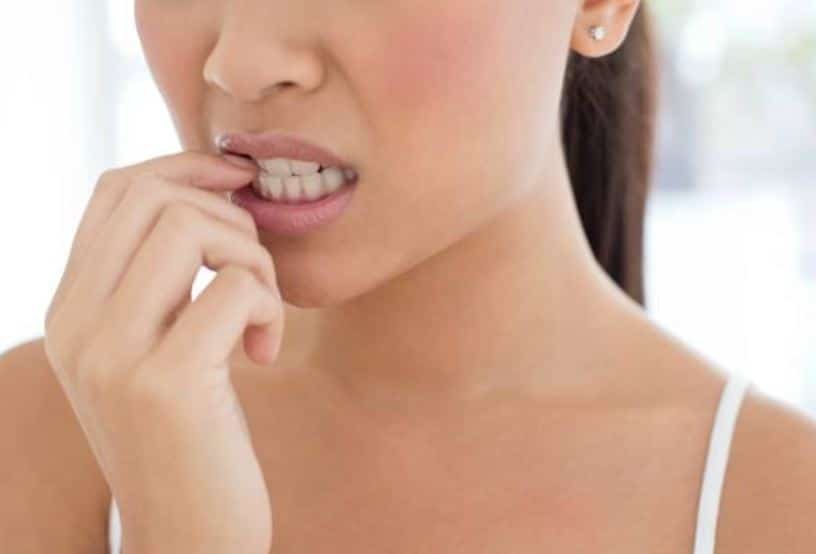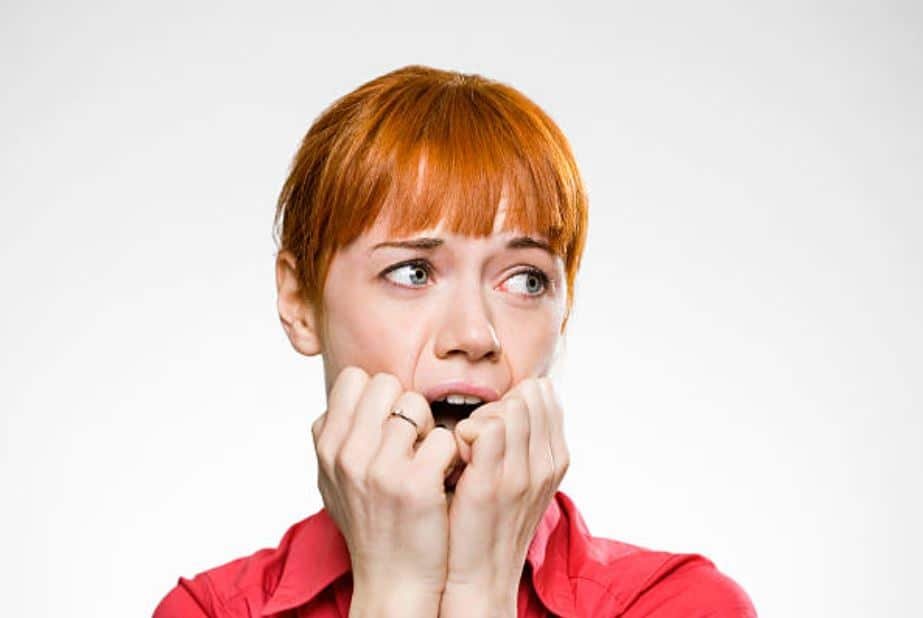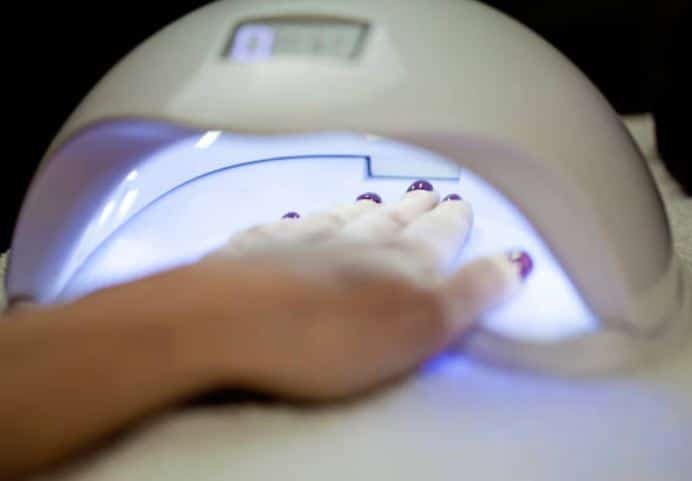Self Improvement
Ultimate Guide to End Nail Biting for Good!

Understanding the Habit:
Nail biting is a common yet overlooked habit that stems from various psychological and emotional factors. It often serves as a coping mechanism to deal with stress, anxiety, or even boredom. The cycle of nail-biting can be difficult to break due to its unconscious nature. This section aims to delve deep into the intricacies of this behavior, offering insights into its origins, the psychology that fuels it, and effective strategies to identify and mitigate the triggers.
Unraveling this habit is the first step toward freedom from nail-biting and the journey to healthier, beautiful nails.
The Psychology Behind Nail Biting
Nail biting, a common yet often overlooked habit, is deeply rooted in psychology. It’s typically a response to stress, anxiety, or even boredom. Some individuals turn to biting their nails as a coping mechanism to manage these uncomfortable emotions, seeking a temporary escape or relief. This behavior can also be linked to perfectionism, where the act of “fixing” or “removing imperfections” in the nails provides a sense of control. Understanding the psychological triggers and motivations behind nail biting is a crucial step in addressing and ultimately overcoming this compulsive habit.

Image Credits: Getty Images
Identifying Triggers and Patterns
In the journey to quit nail biting, recognizing triggers and patterns is a crucial step. Various emotional and environmental factors can spur this habit, including;
- stress
- anxiety
- boredom
- even specific locations and situations.
By being observant and mindful of one’s actions, individuals can identify the moments where the urge to bite nails is strongest. Keeping a journal to record instances of nail-biting can be a helpful tool in this process. With this understanding, tailored strategies can be developed to interrupt and transform these patterns, leading to a successful journey toward breaking the habit.
The Impact of Nail Biting
Nail biting doesn’t just leave your fingertips sore and unsightly – it comes with a host of unwanted physical and emotional effects. Physically, it exposes the skin to infections, impacts dental health, and weakens nail structure. On the emotional front, the appearance of bitten nails can lead to self-consciousness and social anxiety. Understanding these impacts can serve as a powerful motivator, propelling individuals to break free from the cycle of nail-biting and embrace healthier habits for better well-being.
Physical Consequences
- Infections: Nail biting can lead to painful infections around the nails, causing redness and swelling.
- Dental Issues: It can cause tooth chipping, wear, and jaw dysfunction due to constant biting.
- Skin Damage: The skin around the nails becomes damaged, leading to painful sores and peeling.
- Illness Risk: Hands are exposed to various germs; biting nails increase the risk of illnesses.
- Impaired Nail Growth: Constant biting can lead to deformities and affect the nail’s natural growth.

Emotional and Social Effects
Nail biting is more than a physical dilemma; it bears emotional and social ramifications. The constant self-consciousness can erode self-esteem, making social interactions awkward and stressful. It’s a cycle where anxiety feeds the habit, and the visible damage amplifies anxiety.
- Self-Esteem Issues: Constant awareness of bitten nails can diminish confidence.
- Social Anxiety: Fear of judgment can lead to avoidance of social situations.
- Emotional Distress: The visible state of nails can amplify feelings of stress and anxiety.
Kickstart Your Journey to Beautiful Nails
Embarking on your journey to quit nail biting begins with a commitment to change. It’s about fostering a positive mindset, setting clear, attainable goals, and being patient with yourself. Equip yourself with the necessary tools and resources, and remember, each day is a step closer to healthier, more beautiful nails. Embrace the process, acknowledge your progress, and look forward to the confidence and beauty that comes with well-kept, bite-free nails. Your transformation to healthier habits starts now.

Preparing Yourself for Change
Embarking on the journey to stop nail biting requires mental preparation and a positive mindset. It’s essential to understand and accept that the journey will be challenging yet rewarding. Equip yourself with knowledge, establish your reasons for change, and believe in your ability to overcome the habit. Embrace patience, persistence, and self-compassion to navigate through the highs and lows of this transformative journey.
Setting Realistic and Achievable Goals
Setting realistic and achievable goals is crucial in curbing nail biting. By breaking down your journey into manageable steps, you can monitor progress and stay motivated. Remember, the aim is a consistent improvement, not overnight perfection.
Effective Strategies to Quit
Ditch the nail-biting habit with proven strategies! Begin with identifying your triggers to avoid them actively. Employ behavioral modification techniques like positive reinforcement to reward progress. Utilize nail treatments that discourage biting with their bitter taste. In moments of temptation, keep your hands busy with stress balls or other fidget tools, redirecting the urge to a healthier alternative, paving the way for stronger, beautiful nails.

Behavioral Modification Techniques
- Identify Triggers: Recognize and note the situations or emotions that lead to nail biting.
- Replacement Therapy: Substitute biting with other activities, like playing with a stress ball.
- Positive Reinforcement: Reward yourself for milestones reached in your no-bite journey.
- Mindfulness Meditation: Utilize meditation to gain control over impulsive behaviors.
- Habit Reversal Training: Adopt this specialized type of Cognitive Behavioral Therapy to change the behavior pattern.
Tools and Products to Aid the Process
- Bitter Nail Polishes: Deter biting with an unpleasant taste
- Nail Strengtheners: Promote healthy, resilient nails
- Fidget Toys: A distraction for busy hands
- Wearable Barriers: Guards or gloves to prevent access to nails
- Reminder Alarms: Electronic reminders to keep you conscious of your actions
Coping Mechanisms
Embarking on the journey to quit nail biting requires adopting new coping mechanisms to replace the old habit. It’s essential to identify alternative, healthier outlets for stress and anxiety, such as using stress balls, engaging in mindfulness meditation, or exploring creative hobbies. These alternatives not only distract from the urge to bite nails but also contribute positively to mental and emotional well-being, laying a robust foundation for a nail-biting-free life.
Handling Stress and Anxiety
It isn’t just about managing external pressures but also understanding your internal responses. Learning relaxation techniques, seeking social support, and focusing on positive coping mechanisms can significantly mitigate stress, reducing the compulsion to resort to nail-biting as a relief outlet. Each step towards stress management is a stride away from this habit.

Alternatives to Nail Biting
Explore a variety of alternatives to nail biting to ease your transition. Consider fidget toys, stress balls, or mindfulness practices to keep your hands occupied. Applying nail coatings that have a bitter taste can also deter the habit, promoting healthier, stronger nails.
Professional Help:
When to Seek Therapy
Realizing the need for professional help is a pivotal step. When nail biting becomes severe, causing physical harm or emotional distress, it’s time to seek therapy. Experts can pinpoint underlying issues and customize treatment plans to ensure success in overcoming this habit.

Success Stories of Overcoming Nail Biting
The journey to quit nail biting is inspiring and achievable. Meet individuals who’ve triumphed over this challenge, thanks to professional help. Their stories illuminate the path, offering hope, and proving that with the right support and determination, beautiful, healthy nails are within reach for everyone.
Maintaining Progress:
Navigating the path to a nail-biting-free life requires acknowledgment of every victory along the journey. The progress maintenance stage involves two key components: tracking your success and celebrating milestones.
Tracking Your Success:
Implementing tools to monitor progress is essential. Journals, apps, or even mental notes can be effective. Regularly update your tracking tool to visualize advancements, witnessing your strength and determination unfold over time.
Celebrating Milestones:
Each day without nail-biting is a victory worth celebrating. Acknowledge every milestone, no matter how small, as an integral step towards the ultimate goal. Treat yourself, and let these accomplishments be a reminder of your capability to overcome the habit completely.
Nurturing Your Nails
Tips for Healthy Nail Growth
Stay Hydrated: Drink ample water. Hydration impacts your nails’ health and appearance.
Balanced Diet: Incorporate vitamins and minerals. They fortify nails, promoting strength and growth.
Regular Trimming: Trim nails regularly. It prevents splits and encourages uniform growth.
Avoid Chemicals: Limit exposure to harsh chemicals. Use gloves for protection.
Products for Nail Care and Enhancement
Cuticle Oil: Nourishes the nail base, fosters growth, and adds a healthy shine.
Nail Hardeners: Strengthen nails, reducing breaks, and chips.
Nail Creams: Moisturize and nourish, preventing dryness and brittleness.
Polish Remover: Opt for acetone-free options to avoid nail damage and dryness.

Each tip and product suggestion is concise, focusing on key aspects of nurturing and caring for your nails to promote healthy growth and enhancement.
Facing Setbacks:
Understanding and Overcoming Relapses:
It’s common to experience setbacks on the journey to quit nail biting. Acknowledge that relapses are part of the process. Identify the triggers, learn from them, and refocus on your goal to quit. Equip yourself with tools and coping strategies to prevent future episodes. Remember, progress isn’t linear, and every step taken is a move towards a nail-biting-free life.
Building Resilience:
Strengthening your mental and emotional resilience is key. Develop a strong support system and engage in activities that boost your self-esteem and confidence. Celebrate every victory, no matter how small, and remember that patience and persistence are your allies in this journey. With every challenge overcome, you’re not just closer to quitting the habit but also building a stronger, resilient self.
A Nail-Biting-Free Future:
Envisioning and Embracing the Change
Embarking on this transformative journey requires visualizing a future unmarred by nail-biting. Envision strong, healthy nails and the confidence they instill. This mental picture isn’t just an aspiration, but a future reality awaiting your embrace.
Your Journey to Confidence and Beautiful Nails
The path ahead is more than skin-deep healing—it’s a holistic journey of self-improvement. Every step taken towards conquering this habit is a stride towards a more confident, empowered self. Your nails are not just a visual triumph but a testament to your inner strength
-

 Celebrity4 weeks ago
Celebrity4 weeks agoIs YNW Melly Out Of Jail? What Is The YNW Melly Release Date, Career, Early Life, And More
-

 Sports4 weeks ago
Sports4 weeks agoMore Than Just a Game: How College Sports Can Shape Your Future
-

 Tech3 weeks ago
Tech3 weeks agoAI Software: Transforming the Future of Technology
-

 Tech3 weeks ago
Tech3 weeks agoAll About Com. Dti. Folder Launcher: Features, Benefits, Tips, And More













